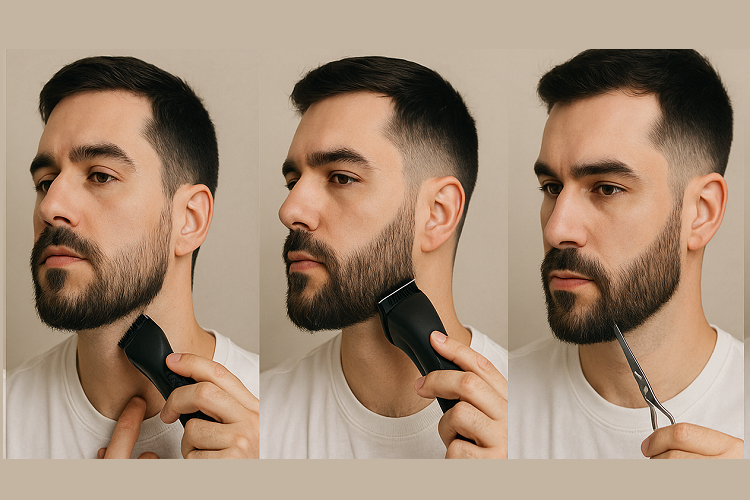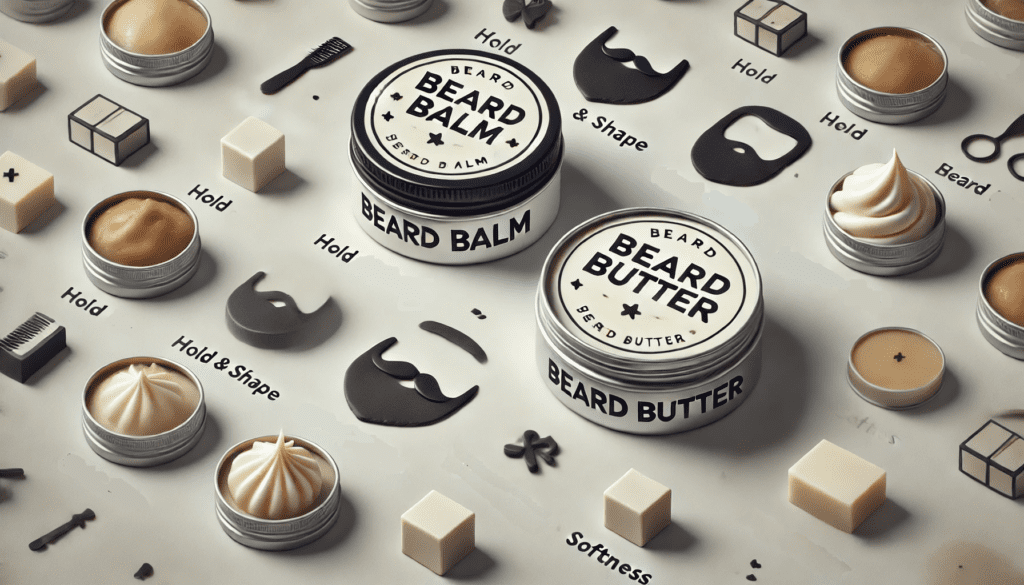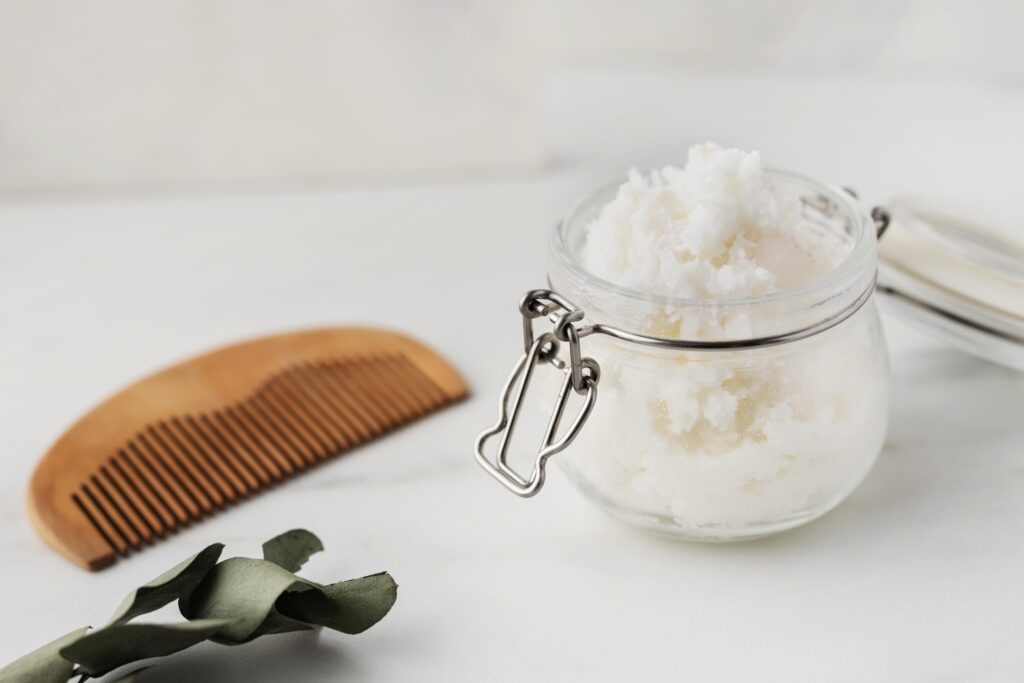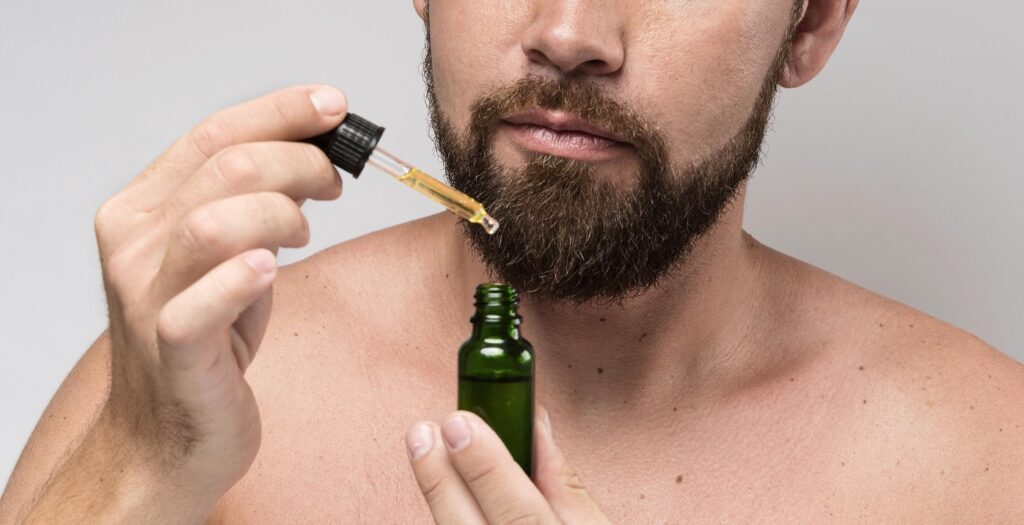When I first tried to fade my beard, I’ll admit, I messed it up more than once. The lines were uneven, and the blend just wasn’t there.
But over time, I figured out the tricks that barbers use, and now, how to fade a beard is something I’ve mastered at home.
In this guide, I’ll share exactly how I do it, step by step, so you can get that sharp, professional faded beard look without leaving your bathroom.
What is a Beard Fade?
A beard fade is a grooming technique where the beard gradually transitions in length. It blends seamlessly from the sideburns down to the jawline and neckline. Similar to a hair fade, it creates a smooth gradient rather than a sharp contrast. It gives a cleaner, more polished, and modern look that complements various hairstyles.
Tools You’ll Need To Get A Beard Fade
- Beard trimmer with adjustable guards – Helps set different lengths for a smooth fade.
- Clippers for precision cutting – Perfect for sharp transitions and clean blending.
- Sharp scissors for trimming – Useful for cutting stray or uneven hairs.
- Beard comb for detangling – Ensures even trimming and guides the fade.
- Beard brush for shaping – Trains hair direction and smooths the beard.
- Beard scissors for detailed work – Ideal for fine shaping near edges.
- Razor for sharp edges (Optional) – Creates defined cheek and neckline lines.
- Detailer for fine lines (Optional) – Adds precision to fades and outlines.
How To Fade A Beard At Home: Step-by-Step Guide
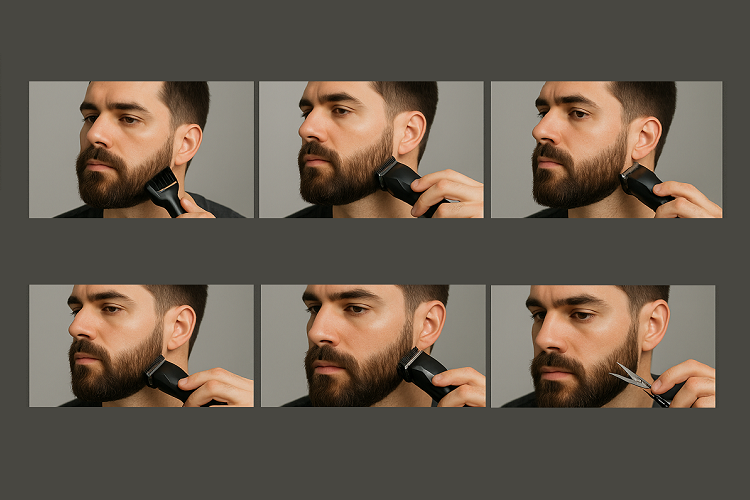
Whenever I fade my beard, I follow a simple but effective routine. Over time, I’ve learned that preparation and patience are key. Here’s exactly how I do it:
Step 1: Preparing My Beard
I always start with a clean canvas. First, I wash and condition my beard to soften the hair. This makes trimming much smoother. Then I brush out all tangles and fluff it up so I can see the natural shape. Before even thinking about the fade, I trim the overall beard length to keep everything even.
Step 2: Start with the Neckline
For me, the neckline sets the tone for the whole fade. I tilt my head slightly back and find the natural line just above my Adam’s apple. I carefully trim everything below that line, keeping it clean and defined. A sharp neckline instantly makes the fade look more professional.
Step 3: Create the Fade Base
Now it’s time to build the fade. I set my trimmer to the shortest guard and start at the top, near my sideburns. I work down in small, controlled strokes, creating a clear base where the fade will start. This gives me a guide for the next steps.
Step 4: Blend the Transition
This part is where the magic happens. I gradually increase the guard length as I move down the beard. The trick I use is an upward flicking motion with the trimmer. It prevents harsh lines and gives that smooth, blended look. I always take my time here; rushing can ruin the fade.
Step 5: Clean and Detail the Lines
Once the fade is looking good, I focus on the details. I sharpen my cheek lines using a trimmer or razor, making sure they’re even on both sides. I also refine the neckline one more time for a crisp finish.
Step 6: Final Touches
Finally, I comb through the beard and look for any uneven spots. If I spot stray hairs, I snip them with scissors. A quick brush and a bit of beard oil later, my fade is complete. And it always feels fresh and sharp.
Common Mistakes to Avoid While Doing A Beard Fade
Not Blending Guards Properly
When I started fading my beard, I often left visible lines because I didn’t blend the guards correctly. Now, I use small upward flicking motions and go over transition areas multiple times to ensure a smooth blend.
Starting with Too Short of a Guard
Using a very short guard in the beginning can ruin the fade and make it look patchy. I always begin with a longer guard and slowly work my way down. It’s easier to take off more hair than to fix a mistake.
Uneven Fade on Both Sides
One side of the beard can look higher or shorter if I rush. I constantly check both sides in the mirror while trimming and run my fingers along the jawline to feel for uneven spots.
Neglecting the Cheek and Neckline Definition
A good fade looks terrible without clean cheeks and necklines. I always outline these areas at the start and clean them again after fading for that sharp, polished finish.
How To Fade A Beard Perfectly: Top Tips
I like to keep my beard fade looking fresh, so I follow these simple maintenance habits:
- Trim and fade every 1–2 weeks to maintain sharpness and shape.
- Apply beard oil daily to keep the hair soft, healthy, and manageable.
- Use beard balm or beard butter when styling to control flyaways and add definition.
- Visit a barber every few months for a clean, professional touch-up.
- Brush and comb the beard regularly to train hair direction and prevent tangles.
- Wash and condition the beard 2–3 times a week to avoid dryness and buildup.
FAQs
How to Fade Sideburns into a Beard?
To fade sideburns into your beard, start with the shortest guard at the top of the sideburn. Gradually increase guard lengths as you move down toward the beard. Use upward flicking motions with the trimmer to blend smoothly and avoid harsh lines.
How to Fade Beard Sideburns?
Begin by trimming the sideburns with a shorter guard than the rest of your beard. Slowly work downwards, increasing the guard length for a natural transition. Comb frequently to check for even blending, and refine the edges with a detail trimmer or razor.
How to Fade Beard into a Bald Head?
Start by fading the beard from the top near the temples, using a trimmer with the shortest guard. Blend upward into the bald scalp by gradually reducing the beard’s thickness. Cleanly outline the top of the beard to create a smooth, seamless connection with the shaved head.
How Long Do Beard Fades Last?
A beard fade typically lasts about 1–2 weeks, depending on hair growth. Regular trimming and upkeep can help maintain the sharp look longer.
What is a Number 1 Fade Beard?
A number 1 fade beard uses the #1 guard (about 1/8 inch or 3mm) at the shortest point. It creates a close, clean fade that gradually blends into longer beard lengths.
What is a Taper vs Fade?
A taper gradually shortens hair near the edges, like the neckline or sideburns, while keeping most hair length. A fade, on the other hand, blends hair from short to long across a larger area, creating a seamless gradient.
Is a 0 a Bald Fade?
Yes, a 0 fade means no guard on the Clippers, trimming hair down to the skin. It gives a bald, skin-level finish.
What is a 3 on a Beard?
A #3 guard on a beard trimmer leaves hair about 10mm (3/8 inch) long. It’s great for a fuller, well-groomed beard look.
Wrapping Up: How To Fade A Beard Perfectly
Fading my beard has become one of my favorite grooming rituals. It’s not just about looking sharp; it’s about feeling confident and in control of my style.
Once you master the technique, it becomes second nature. If you’re just starting, take your time. Trust me, the results are worth it.
And if all else fails, there’s no shame in letting a barber give you a fresh start!

